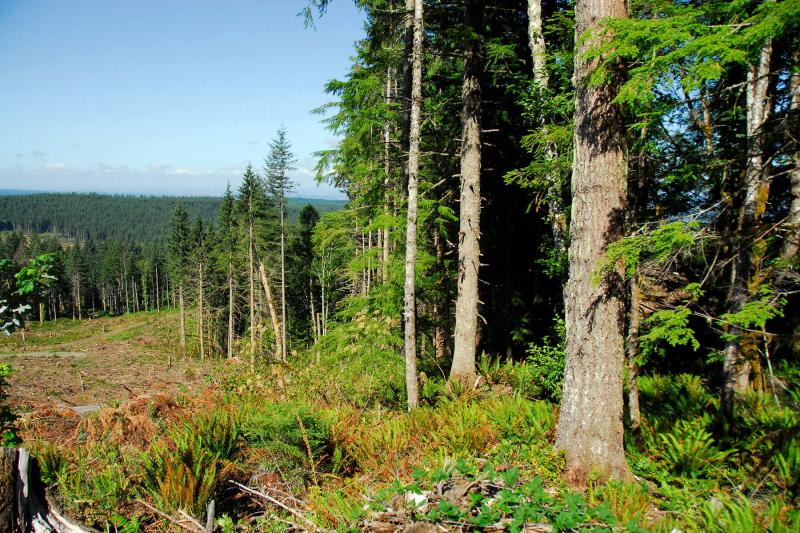NOAA Fisheries has approved a new conservation framework for about 30,000 acres of private forestland in northwest Oregon. It will improve habitat for threatened Chinook and coho salmon and steelhead over the coming decades.
The habitat conservation plan addresses Port Blakely US Forestry forests in the Clackamas and Molalla basins. It’s the first plan of its kind for private forests in Oregon. The company will continue to harvest timber under the 50-year permit while also improving habitat the threatened species need to recover.
Habitat conservation plans take advantage of special flexibilities built into the Endangered Species Act, now marking its 50th anniversary. The plans demonstrate that protected species can benefit from working lands that also contribute to the local economy.
“It represents a tremendous dedication of resources on the part of the company,” said Annie Birnie, a fisheries biologist in NOAA Fisheries’ West Coast Region who worked with Port Blakely to develop the plan. “If you are not in it to see it through, it does not make sense. You have to be committed over the long-haul because the benefits come over time.”
Improving Habitat for Species
Under the Endangered Species Act, habitat conservation plans allow private landowners to use their lands even when the commercial uses affect threatened and endangered species. In the case of Port Blakely, a habitat conservation plan allows for limited impacts on fish and other wildlife as the company continues harvesting timber. In turn, the company agrees to improve the habitat over the next few decades.
Under the plan, for example, Port Blakely will decommission logging roads, remove barriers to fish passage on streams, and increase the size of forested buffers along streams. The company will also add large wood to streams to provide refuge for juvenile fish. It will provide grants to local watershed councils or other applicants to carry out similar work nearby.
Port Blakely and the federal agencies involved previously adopted the company’s first habitat conservation plans in Washington more than 25 years ago, benefiting the company and the fish. “We are big believers in a collaborative approach to habitat protection, and NOAA’s partnership in this process was critical,” said Claudine Reynolds, Director of Wildlife and Environmental Policy at Port Blakely. “This plan will allow us to continue to manage our forests to provide timber, while improving the outlook for the species, and offering a beautiful natural resource for our community.”
Long-Term Recovery Benefits
The benefit for the company comes in the form of an incidental take permit, which allows for limited impacts on covered species. That makes sense from a conservation standpoint: The company’s habitat improvements will provide greater value to the species by promoting recovery in the longer term.
Port Blakely first sought the habitat conservation plan in 2016. Since then, biologists and foresters have examined the habitat across the company’s lands. They considered what conservation measures would most benefit the threatened species, while remaining reasonable for the company. “It requires a real commitment at a high level on both sides,” said Kathleen Wells, branch chief in NOAA Fisheries West Coast Region.
A similar habitat conservation plan is in place for the publicly owned Bull Run Watershed that provides Portland with its drinking water. NOAA Fisheries and the U.S. Fish and Wildlife Service are also working with the Oregon Department of Forestry on prospective habitat conservation plans for state forests, although none have yet been completed.



